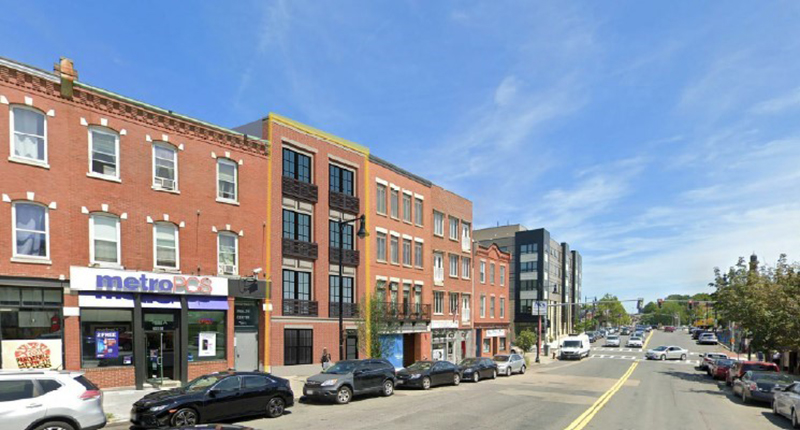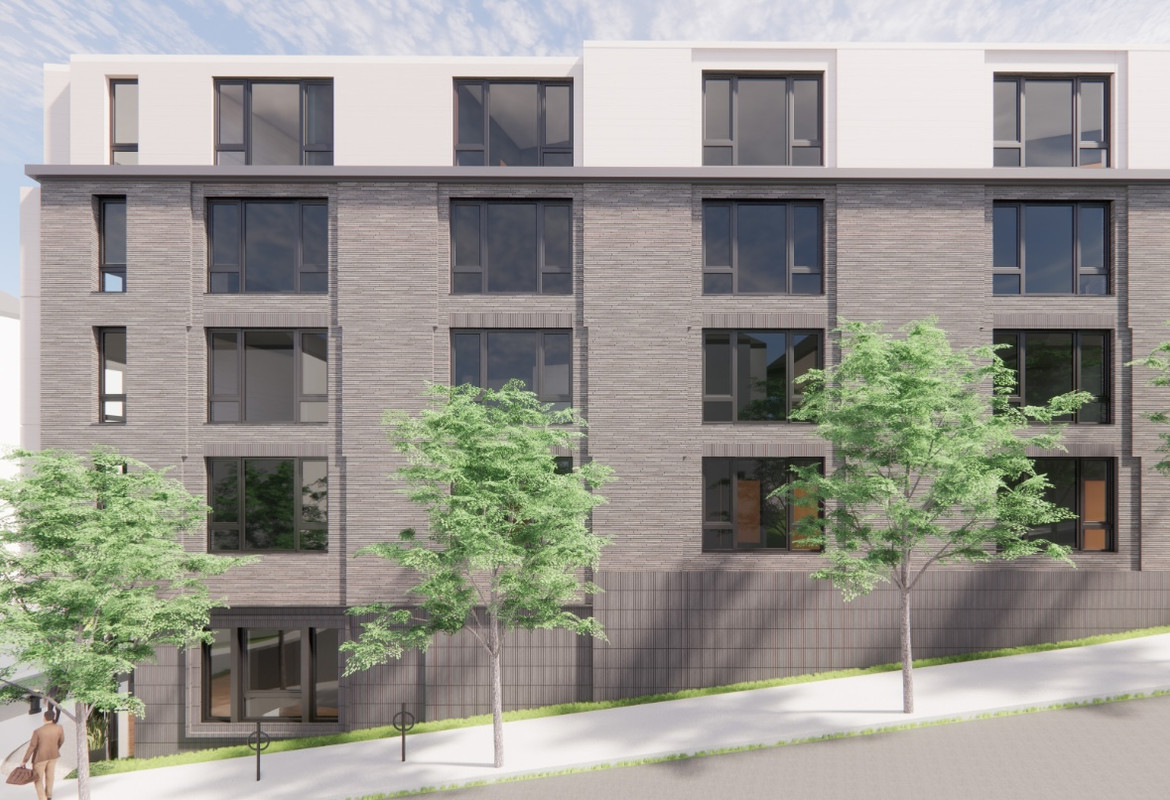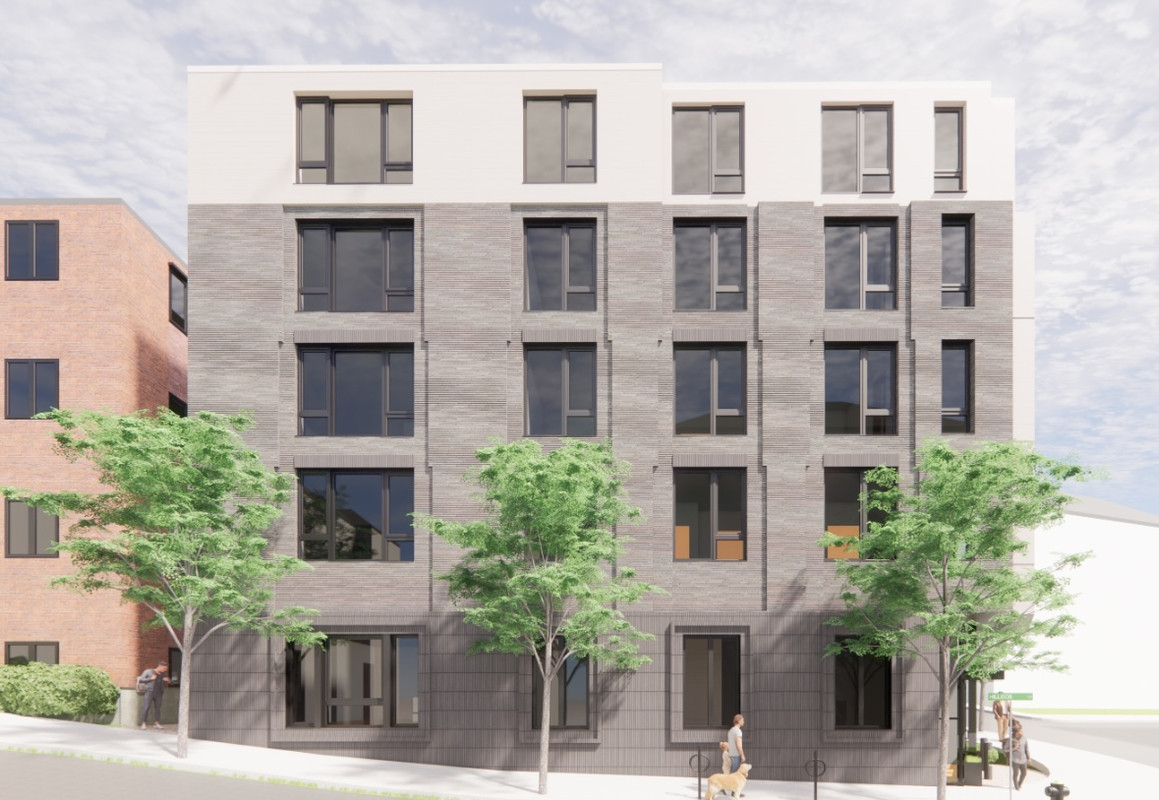You are using an out of date browser. It may not display this or other websites correctly.
You should upgrade or use an alternative browser.
You should upgrade or use an alternative browser.
Mission Hill Infill and Small Developments
- Thread starter JohnAKeith
- Start date
stick n move
Superstar
- Joined
- Oct 14, 2009
- Messages
- 11,970
- Reaction score
- 18,399
Cornerstone Realty Capital arranges $2.7 million in financing for construction of condominium development

“Boston, MA Cornerstone Realty Capital arranged $2.7 million in financing for the construction of a residential condominium development.
The development will feature six condominiums, a mix of three studio units, one one-bedroom unit, one two-bedroom unit, and one three-bedroom unit. Units will range from 484 s/f to 1,353 s/f. Each of the studio units will be spacious enough to offer a separate living and bedroom area. The two-bedroom and three-bedroom units will both have two bathrooms and expand between the 3rd and 4th floors with a private roof deck. The property will be built to a luxury standard and will feature modern finishes such as hardwood flooring, crown molding, recessed lighting, high-end stainless-steel appliances, quartz countertops, and custom cabinets. The bathrooms will feature hardwood vanities and custom tile surrounds. The appliance package includes in-unit washers and dryers.
Andrew Saccone, executive vice president at Cornerstone, said, “The sponsor’s experience with similar projects along with the property’s highly sought-after location generated significant interest and a competitive process for finding the right financing solution for our client.”
The property is centrally located next to the Roxbury Crossing Orange Line stop. This location is close to employment, education, and shopping hubs such as the Longwood Medical area, Wentworth Institute of Technology, and One Brigham Circle. In addition, its location gives the benefit of the lively night life and restaurant scene of iconic Tremont St.
All of these benefits have led to the Roxbury Crossing area to see a lot of re-development and revitalization as an influx of people and businesses alike have seen its potential. Being right next to the Roxbury Crossing stop gives access to all the Orange Line T stops throughout Boston; once on the Orange Line at Roxbury Crossing, it is only a 12-minute commute to Downtown Crossing. The location also provides easy access to major highways like interstates 93 and 90, effectively allowing access to areas north, south, and west of Boston.”
https://nerej.com/print/57096
stick n move
Superstar
- Joined
- Oct 14, 2009
- Messages
- 11,970
- Reaction score
- 18,399
Java King
Active Member
- Joined
- Apr 6, 2007
- Messages
- 986
- Reaction score
- 2,047
Totally agree! More of this please around the city!Its giving modern Dutch infill with that brick detail and the window proportions. More of this, please and thank you.
stick n move
Superstar
- Joined
- Oct 14, 2009
- Messages
- 11,970
- Reaction score
- 18,399
Developers propose 44 affordable condos and a community garden on vacant city-owned land on Mission Hill
By adamg on Sat, 09/21/2024 - 11:05am

44 units
“A trio of developers awarded a series of unused lots owned by the city between Terrace and Parker streets on Mission Hill have filed plans for a four-story condo building with retail space on the ground floor and a community garden out back along Parker Street, next to an "urban wild" that will be formally turned into a city park.
The proposal for a 1.3-acre site at 77 Terrace St., half of which were once part of a brewery turned distillery turned plumbing supply company, the other half of which were once homes torn down by the city between the 1960s and 1980s, was submitted to the Boston Planning Department by Jonathan Garland, Dariela Villon-Maga and Kevin Maguire of Oxbow Urban, DVM consulting and JGE Development…..”
https://www.universalhub.com/2024/mission-hill-affordable-condos
stick n move
Superstar
- Joined
- Oct 14, 2009
- Messages
- 11,970
- Reaction score
- 18,399
36 Parker Hill Avenue
“The Rise at Longwood Development team is proposing a five (5) story building of approximately 30,861 square feet of gross floor area (“GFA”), including thirty-eight (38) residential rental apartments, with a mix of studios and two-bedrooms unit types. The ground floor programming accommodates a shared outdoor courtyard with new catenary exterior lighting, soft seating and pavers, a fitness/yoga studio, indoor/outdoor bike storage and a modest amount of off-street parking. The project also envisions an outdoor roof deck amenity for residents.”
https://www.bostonplans.org/projects/development-projects/36-parker-hill-avenue







https://bpda.app.box.com/s/fkcwam95bu8e38gmbszwzglbnynatiqs
stick n move
Superstar
- Joined
- Oct 14, 2009
- Messages
- 11,970
- Reaction score
- 18,399
“The zoning code contains the rules for nearly everything that gets built within Boston’s city limits. But our current code is, well, a little unwieldy. For starters, it’s long — 3,791 pages, to be exact. That's five times longer than the average for similarly sized cities, and over 1,000 pages longer than New York City's code. Put another way, Boston has 79 pages for each square mile of land, 27 times the average of its peers…..” Link
-This is a problem
-This is a problem
I've recently started submitting comments for pretty much every project. I'd encourage others to do so as well. Oftentimes we may think it only matters if we are a direct abutter, but I've definitely seen some of the design critiques I've made be addressed even while the building might be downsized as a response to others' comments. There was also that building that got an EXTRA FLOOR based solely on community comments (there were basically only 5 comment responses).
I think comments on the 'small project review' projects have the most impact since some of the developers/owners really just try their best, but are unsure what will stick. The City and local electeds need to see how proposals are being received in order to support them. They can often see through NIMBY comments, but if there are no general support comments, it's really tough to go against the grain to support an otherwise super reasonable project, especially considering the small sample size for comments these small projects get.
I think comments on the 'small project review' projects have the most impact since some of the developers/owners really just try their best, but are unsure what will stick. The City and local electeds need to see how proposals are being received in order to support them. They can often see through NIMBY comments, but if there are no general support comments, it's really tough to go against the grain to support an otherwise super reasonable project, especially considering the small sample size for comments these small projects get.
stick n move
Superstar
- Joined
- Oct 14, 2009
- Messages
- 11,970
- Reaction score
- 18,399
How do you go about doing this? I definitely agree that it can have an impact, especially when most comments are usually negative nimby complaints.I've recently started submitting comments for pretty much every project. I'd encourage others to do so as well. Oftentimes we may think it only matters if we are a direct abutter, but I've definitely seen some of the design critiques I've made be addressed even while the building might be downsized as a response to others' comments. There was also that building that got an EXTRA FLOOR based solely on community comments (there were basically only 5 comment responses).
I think comments on the 'small project review' projects have the most impact since some of the developers/owners really just try their best, but are unsure what will stick. The City and local electeds need to see how proposals are being received in order to support them. They can often see through NIMBY comments, but if there are no general support comments, it's really tough to go against the grain to support an otherwise super reasonable project, especially considering the small sample size for comments these small projects get.
sean99090900
Active Member
- Joined
- Jan 18, 2024
- Messages
- 185
- Reaction score
- 821
I've been writing in comments or some of the larger proposals, but that's a good point on how it might be more impactful to send something in on these small projects.I've recently started submitting comments for pretty much every project. I'd encourage others to do so as well. Oftentimes we may think it only matters if we are a direct abutter, but I've definitely seen some of the design critiques I've made be addressed even while the building might be downsized as a response to others' comments. There was also that building that got an EXTRA FLOOR based solely on community comments (there were basically only 5 comment responses).
I think comments on the 'small project review' projects have the most impact since some of the developers/owners really just try their best, but are unsure what will stick. The City and local electeds need to see how proposals are being received in order to support them. They can often see through NIMBY comments, but if there are no general support comments, it's really tough to go against the grain to support an otherwise super reasonable project, especially considering the small sample size for comments these small projects get.
I'm also curious where exactly you are leaving the comments, is it just on the (now) planning department website? Is that the best avenue or is there another one I'm not aware of
How do you go about doing this? I definitely agree that it can have an impact, especially when most comments are usually negative nimby complaints.
If you go to the page of any proposal on the Planning Department website, it has the comment form at the bottom. So for this project: https://www.bostonplans.org/projects/development-projects/36-parker-hill-avenueI'm also curious where exactly you are leaving the comments, is it just on the (now) planning department website? Is that the best avenue or is there another one I'm not aware of
You can also click in the timeline where it says "The comment period is currently open. You may submit your comments now." which is the same comment form as the above.
stick n move
Superstar
- Joined
- Oct 14, 2009
- Messages
- 11,970
- Reaction score
- 18,399
If you go to the page of any proposal on the Planning Department website, it has the comment form at the bottom. So for this project: https://www.bostonplans.org/projects/development-projects/36-parker-hill-avenue
You can also click in the timeline where it says "The comment period is currently open. You may submit your comments now." which is the same comment form as the above.
Awesome, will be doing this. Thanks.
It’s best to counter NIMBY arguments by arguing not in favor of the current proposal, but in favor of a denser, taller proposal. Cite local context, lack of housing, proximity to transit, etc.Awesome, will be doing this. Thanks.
stick n move
Superstar
- Joined
- Oct 14, 2009
- Messages
- 11,970
- Reaction score
- 18,399
77 terrace st presentation from november:
https://bpda.app.box.com/s/uuhqklm487mu2drma8ujdagv7o94xijy
https://bpda.app.box.com/s/uuhqklm487mu2drma8ujdagv7o94xijy
